#Sigismund of Luxembourg
Text
ROUND 3, MATCH 4
Admin's commentary: ...okay this one is just. Not fair. For once I wish the Czechs were there to balance the score, although it still would be an incredibly lopsided battle. Zmikund, my poor baby.
***

Zsigmond (Žigmund Luxemburský)
1387-1437
also king of Bohemia and emperor of the Holy Roman Empire, elsewhere best known from what he did to Jan Hus, but we don't have enough time to unpack that, needless to say he's responsible for the bratríks (branch of hussites that went on supply raids into Hungary), so fuck him just for that
his rule in Hungary was long and eventful, after he secured the throne, his first order of business was a war with Ottomans, which ended in the catastrophic battle of Nicopolis, later another war, during which he regained Beograd, but lost Golubac, which was an important fortress
after the Hungarian nobles were found to conspire against him, he instituted harsh repressions, destroying many important noble houses, which he then tried to replace with a nobility faithful to him - but that just caused yet another conspiracy, which Zsigmond had to appease by marrying Barbara of Celle
founded the Order Of The Dragon, which is how Vlad II. Dracul and after him his son Vlad III. Dracula got their monikers
supported the rights of cities, especially in his Minor Decree, but lest our fellow medieval city kinnies start liking him too much, he was also the guy who lended several cities in Spiš to the Poles (cities formally stayed part of Hungary, but the profits from them went to the king od Poland; which is basically how it stayed untill the divisions of Poland)
he also instituted another two law codes concerning courts and army, gave himself placetum regium (right to veto reading of papal bulls on his territories, which meant he could witheld the orders of the pope itself from his people; @best-habsburg-monarch might recognize this one)... basically for better or for worse, he was a Big Damn Deal here, truly one of the most important monarchs of Hungary, just look at how long his entry is
@biksarddedrak said about him: "I want to see Zsigmund to win because well: a) catastrophic results of battle of Nicopolis weren't his fault. Those damm Frenchmen once again doomed Europe by their arrogance. Funny enough they were so scared after this battle, that it ended their support for any war with Ottomans in the future. (Forget that whole beef with Habsburgs, that comes much later.); b) ugh, well, he may king of the Romans and king f the Bohemia and temporary the most inportant ruler of Christendom, but it was the kingdom of Hungary he could trully call his own and had here full authority. And that is truly impressive because, well... Hungary was always kinda difficult to manage.; c) the dragon. The Dragon. THE DRAGON!!!; d) and also time to spice up relationship between Slovaks and Czechs right after anniversary of our divorce.

I.Mátyás (Matej I.); also known as Hunyadi Mátyás (Matej Korvín)
1458-1490
I mean, do I even have to say anything??? you know who this guy is right.
fought the Ottomans. supported arts and sciences. instituted important reforms. founded Academia Istropolitana. made Buda the capital and built the Buda Castle. gained the crown of Bohemia and stole territory from Austria. the man. the myth. the legend.
@deetherusalka said about him: "Lmao Bohemian crown snatcher, it's still so funny to me how in Czechia he's always presented as the evil himself and then everywhere else he's celebrated (which is not wrong imho! it's just funny how the narrative changes depending on perspective you learn about it)"
@durzarya said about him: #listen i love Mátyás király and i have voted for him#but my guy had some interesting policies#hilarious information about him: at 19 he captured Vlad Țepeș
@biksarddedrak said about him: #It's not even fight#It's just bloody beating#Matyás is remembered even in many historical legends as a good and just ruler#he reformed military and made the world fear Hungary#first profesional army#he managed to pay not only for the one for a THREE armies at a time#also his love with his wife Beatrice is a thing of a legends#The GOOD sort of legends#also I am completely obsessed with a way how his name is pronouced#seriously check that out it's hilarious#black army
8 notes
·
View notes
Text
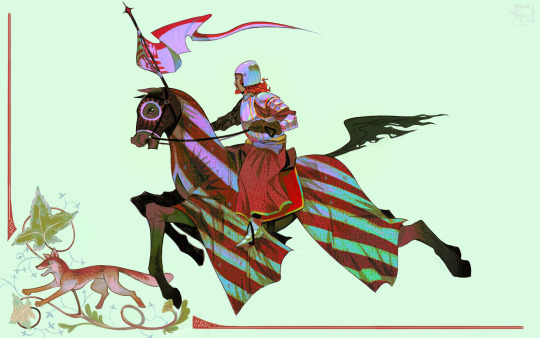
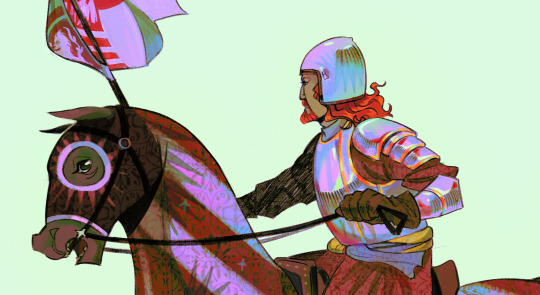
Sigismund of Luxembourg aka the Red Fox
his design in KCD is 👌
alt version and lineart

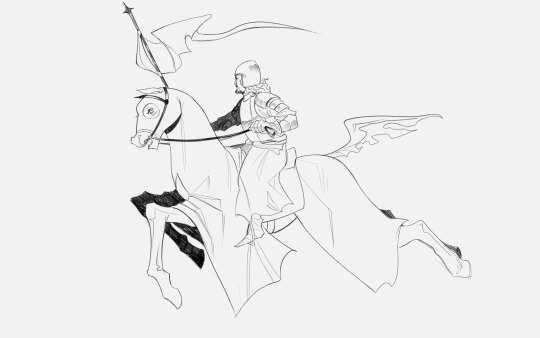
#art#kingdom come deliverance#kingdom come deliverance fanart#kcd#kcd fanart#still in my medieval era
152 notes
·
View notes
Text




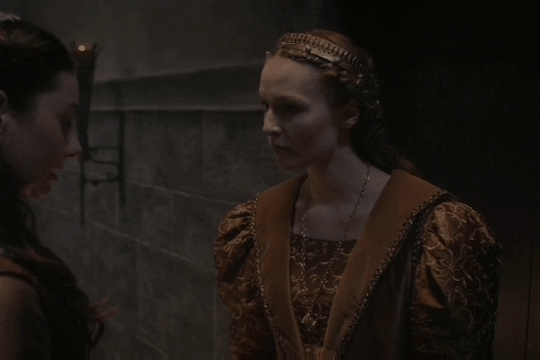

QUEEN ANNE OF CILLI (1386 — 21 may 1416)
Anne of Cilli was born probably in the 1386 as a daughter of William, Count of Cilli and Anne of Poland. Her father died when she was around ten years of age and her mother had remarried to Ulrich, Duke of Teck. Because of that, Anne was left under the care of her father's brother, Herman. According to the legend, in 1399 King Jadwiga of Poland on her deathbed told Władysław Jagiełło, her current husband, to marry Anne of Cilli so he could still rule Poland. Anne was a granddaughter of Casimir The Great, the last king from the Piast dynasty, so having a descendant of him as a wife would strengthen Władysław's position on the throne. One year later a delegation composed of Jan of Oblichów, Jan of Ostrowiec and Hinczka of Rogów came to Cilli with a proposition of marriage between King of Poland and Anne. Herman, Count of Cilli immediately agreed and in 16th July 1401 Countess come to Cracow. She was welcomed by Poles with joy, but according to the Jan Długosz her future husband wasn't that happy. The wedding was postponed and Anne sent to a convent to learn polish language. Finally in 29th January 1402, in the Wawel Cathedral, their wedding took place. There were many guests, including Vytautas, the Grand Duke of Lithuania. One year later Anne was crowned a Queen of Poland and was able meet her mother for the first time since the Duchess left Celje.
The marriage of Anne and Władysław was quite cold at the beginning. The king often left the capital, leaving his wife alone. He was also known to be suspicious, introverted person, so it took him a while to trust Anne. It also didn't help that the queen had been accused of marital infidelity several times. The first time was in 1407: Klemens of Moskorzew accused Anne of cheating on her husband with Jakub of Kobylan and Mikołaj Chrząstowski and the proof was supposed to be the sudden collapse of the floor in Queen's chamber. King at first believed in that and locked Jakub. Polish nobles during the convention in Niepołomice defended Anne and the woman was found innocent. But year later she was accused of having an affair with Andrzej of Tęczyn — this case did not reach a public hearing. In 1411 the Queen was accused of having the infidelity with archbishop Kurowski, but some sources says that actually Anne accused the man for a inappropriate attitude to her person. Kurowski died during a trip to the royal court to clear things up. For a first few years of marriage Anne of Cilli didn't give a birth to a child. It is known that she had several miscarriages. In the 1408 their first and only child, Princess Jadwiga, was born. Władysław was disappointed that the baby turned out to be a girl, but for a many years she was considered the heiress of the kingdom and a possible future king.
Anne hated the Teutonic Order as much as her husband and unlike her predecessor, urged Władysław to go to war with them. And he did that. In 1410 after the battle of Grunwald, Jagiełło sent two laters to inform about his victory: one of them was sent to Anne. It is the proof that their relationship develop during the years and Władysław started to like her and see as a friend and partner.
The Queen accompanied her husband during the trip to Hungary, where Jagiełło was negotiating with Sigismund of Luxembourg. There she met with her cousin, Barbara, who was the second wife of Sigismund. Thanks to Anne, the polish regalia, which King Louis The Great once brought with him to Buda, returned to Poland. Anne also visited Lithuania and observe the Christanisation of Samogitia. In early 1415 she travelled with her husband and even met Alexander of Moldavia in Sniatyn.
Anne came back to Cracow and Władysław travelled to Lithuania. Probably at the end of 1415, the queen got sick. In 1416 a special envoy was sent to king with a information that Anne was seriously ill. Despite the news, Jagiełło didn't hurry back to Cracow. He approached the capitol in May and few days later, 21th May 1416 the queen died. She was buried in the Wawel's Cathedral, near to altor of Saint Dorothy.
#historyedit#koronakrólówedit#korona królów#the crown of the kings#korona królów jagiellonowie#anne of cilli#anna cylejska
63 notes
·
View notes
Note
Where did the name Draculesti come from? Why is the line that includes Vlad called that way? (I know it should be spelled a bit differently but my English keyboard doesn’t allow that)
From Vlad Dracul of course, Vlad II Dracul got it because his enemies gave him the nickname "Dracul" (Devil) not because he was evil or anything they just didn't like him very much and he was quite cunning.
And just like Vlad Dracul, the nickname has nothing to with the order of the dragon. Vlad Dracul interacted with 2-3 people from the order
1. Sigismund of Luxembourg who was allright.
2. Alexandru I Aldea(?) His brother, who tried to kill him.
3. Iancu de Hunedoara who killed him.
Vlad III got it from the way he was signing his letters "Vlad the son of Vlad" so people outside the country start calling him "Draculea" "The son of Dracul" and in 1475 when he changed religions he changed his name to Draculea since it was already pretty popular.
And the other Draculesti just kept that name, so it became the Draculesti line.
Here is a video about it:
youtube
16 notes
·
View notes
Text
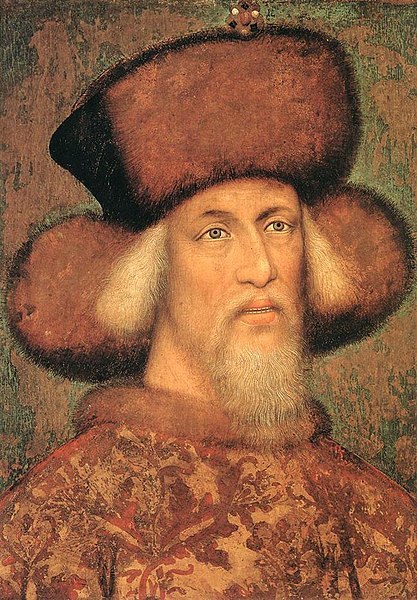
The Chivalric Order of the Dragon was created by Sigismund of Luxembourg, King of Hungary.
24 notes
·
View notes
Text
Tomorrow I'll first travel to Leipzig and then after a short stop I'll continue to travel to Praha (Prague) in Czech Republic.
That means... new travel blog for all of you who may be interested.
Praha is a very old city and said to be one of the most beautiful ones in Europe. It's the historical center of Bohemia, has one of the biggest intact jewish quarters and lots of late medieval buildings.
If you have played Kingdom Come: Deliverence you may have heard of it a lot of times. It's where Jan Hus preached, and where Jan Zizka defeated Sigismund of Luxembourg.
I'm very excited.
6 notes
·
View notes
Photo

Mary, also known as Maria of Anjou (1371 – 17 May 1395), reigned as Queen of Hungary and Croatia (formally "king") between 1382 and 1385, and from 1386 until her death. She was the daughter of Louis the Great, King of Hungary and Poland, and his wife, Elizabeth of Bosnia. Mary's marriage to Sigismund of Luxembourg, a member of the imperial Luxembourg dynasty, was already decided before her first birthday. A delegation of Polish prelates and lords confirmed her right to succeed her father in Poland in 1379.
Having no male siblings, Mary was crowned "king" of Hungary on 17 September 1382, seven days after Louis the Great's death. Her mother, who assumed regency, absolved the Polish noblemen from their oath of loyalty to Mary in favor of Mary's younger sister, Jadwiga, in early 1383. The idea of a female monarch remained unpopular among the Hungarian noblemen, the majority of whom regarded Mary's distant cousin, Charles III of Naples, as the lawful king. To strengthen Mary's position, the queen mother wanted her to marry Louis, the younger brother of Charles VI of France. Their engagement was announced in May 1385.
Charles III of Naples landed in Dalmatia in September 1385. Sigismund of Luxembourg invaded Upper Hungary (now Slovakia), forcing the queen mother to give Mary in marriage to him in October. However, they could not prevent Charles from entering Buda. After Mary renounced the throne, Charles was crowned king on 31 December 1385, but he was murdered at the instigation of Mary's mother in February 1386. Mary was restored, but the slaughtered king's supporters captured her and her mother on 25 July. Queen Elizabeth was murdered in January 1387, but Mary was released on 4 June 1387. Mary officially remained the co-ruler with Sigismund, who had meanwhile been crowned king, but her influence on the government was minimal. She and her premature son died after falling from her horse during a hunting trip.
70 notes
·
View notes
Text
Partial List of Royal Saints
Saint Abgar (died c. AD 50) - King of Edessa, first known Christian monarch
Saint Adelaide of Italy (931 - 999) - Holy Roman Empress as wife of Otto the Great
Saint Ælfgifu of Shaftesbury (died 944) - Queen of the English as wife of King Edmund I
Saint Æthelberht of Kent (c. 550 - 616) - King of Kent
Saint Æthelberht of East Anglia (died 794) - King of East Anglia
Saint Agnes of Bohemia (1211 - 1282) - Bohemian Princess, descendant of Saint Ludmila and Saint Wenceslaus, first cousin of Saint Elizabeth of Hungary
Saint Bertha of Kent (c. 565 - c. 601) - Frankish Princess and Queen of Kent as wife of Saint Æthelberht
Saint Canute (c. 1042 - 1086) - King of Denmark
Saint Canute Lavard (1096 - 1131) - Danish Prince
Saint Casimir Jagiellon (1458 - 1484) - Polish Prince
Saint Cormac (died 908) - King of Munster
Saint Clotilde (c. 474 - 545) - Queen of the Franks as wife of Clovis I
Saint Cunigunde of Luxembourg (c. 975 - 1033) - Holy Roman Empress as wife of Saint Henry II
Saint Edmund the Martyr (died 869) - King of East Anglia
Saint Edward the Confessor (c. 1003 - 1066) - King of England
Saint Edward the Martyr (c. 962 - 978) - King of the English
Saint Elesbaan (Kaleb of Axum) (6th century) - King of Axum
Saint Elizabeth of Hungary (1207 - 1231) - Princess of Hungary and Landgravine of Thuringia
Saint Elizabeth of Portugal (1271 - 1336) - Princess of Aragon and Queen Consort of Portugal
Saint Emeric (c. 1007 - 1031) - Prince of Hungary and son of Saint Stephen of Hungary
Saint Eric IX (died 1160) - King of Sweden
Saint Ferdinand (c. 1199 - 1252) - King of Castile and Toledo
Blessed Gisela of Hungary (c. 985 - 1065) - Queen Consort of Hungary as wife of Saint Stephen of Hungary
Saint Helena (c. 246 - c. 330) - Roman Empress and mother of Constantine the Great
Saint Henry II (973 - 1024) - Holy Roman Emperor
Saint Isabelle of France (1224 - 1270) - Princess of France and younger sister of Saint Louis IX
Saint Jadwiga (Hedwig) (c. 1373 - 1399) - Queen of Poland
Saint Joan of Valois (1464 - 1505) - French Princess and briefly Queen Consort as wife of Louis XII
Blessed Joanna of Portugal (1452 - 1490) - Portuguese princess who served as temporary regent for her father King Alfonso V
Blessed Karl of Austria (1887 - 1922) - Emperor of Austria, King of Hungary, King of Croatia, and King of Bohemia
Saint Kinga of Poland (1224 - 1292) - Hungarian Princess, wife of Bolesław V of Poland and niece of Saint Elizabeth of Hungary
Saint Ladislaus (c. 1040 - 1095) - King of Hungary and King of Croatia
Saint Louis IX (1214 - 1270) - King of France
Saint Ludmila (c. 860 - 921) - Czech Princess and grandmother of Saint Wenceslaus, Duke of Bohemia
Blessed Mafalda of Portugal (c. 1195 - 1256) - Portuguese Princess and Queen Consort of Castile, sister of Blessed Theresa of Portugal
Saint Margaret of Hungary (1242 - 1270) - Hungarian Princess, younger sister of Saint Kinga of Poland and niece of Saint Elizabeth of Hungary
Saint Margaret of Scotland (c. 1045 - 1093) - English Princess and Queen Consort of Scotland
Blessed Maria Cristina of Savoy (1812 - 1836) - Sardinian Princess and Queen Consort of the Two Sicilies
Saint Matilda of Ringelheim (c. 892 - 968) - Saxon noblewoman and Queen of East Francia as wife of Henry I
Saint Olaf (c. 995 - 1030) - King of Norway
Saint Olga of Kiev (c. 900 - 969) - Grand Princess of Kiev and regent for her son Sviatoslav I, grandmother of Saint Vladimir the Great
Saint Oswald (c. 604 - 642) - King of Northumbria
Saint Radegund (c. 520 - 587) - Thuringian Princess and Frankish Queen
Saint Sigismund of Burgundy (died 524) - King of the Burgundians
Saint Stephen of Hungary (c. 975 - 1038) - King of Hungary
Blessed Theresa of Portugal (1176 - 1250) - Portuguese Princess and Queen of León as wife of King Alfonso IX, sister of Blessed Mafalda
Saint Vladimir the Great (c. 958 - 1015) - Grand Prince of Kiev and grandson of Saint Olga of Kiev
26 notes
·
View notes
Text
~ Someday, someday
We're gonna rule the world
I know someday
We're gonna rule the world
Counting down to explosion
I hear the moment approaching
Someday, someday
We're gonna rule the world ~
* Rule the World — Zayde Wølf —
Sigismund of Luxembourg 💙💅🏻






2 notes
·
View notes
Photo

Mary I (1370-1395), Queen of Hungary etc. Lithograph by Josef Kriehuber.
Mary, also known as Maria of Anjou, reigned as Queen of Hungary and Croatia (formally "king") between 1382 and 1385, and from 1386 until her death. She was the daughter of Louis the Great, King of Hungary and Poland, and his wife, Elizabeth of Bosnia.
Having no male siblings, Mary was crowned "king" of Hungary on 17 September 1382, seven days after Louis the Great's death.
Mary's marriage to Sigismund of Luxembourg, a member of the imperial Luxembourg dynasty, was already decided before her first birthday.
#anjou mária#mary of anjou#queen of hungary#josef kriehuber#magyar királyság#magyar királyne#full length portrait#kingdom of hungary#maison d'anjou#casa d'angio#house of anjou#full-length portrait#königreich ungarn#queen mary of hungary#queen mary I#mary of hungary#magyar királynő
16 notes
·
View notes
Text
ROUND 2, MATCH 7
Admin's commentary: This one is probably going to come down to people who love vs people who hate Sigismund of Luxembourg. Good thing there aren't that many Czechs among the electorate haha.
***
WHAT MY PROFESSOR OF MEDIEVAL HISTORY SAID ABOUT THEM
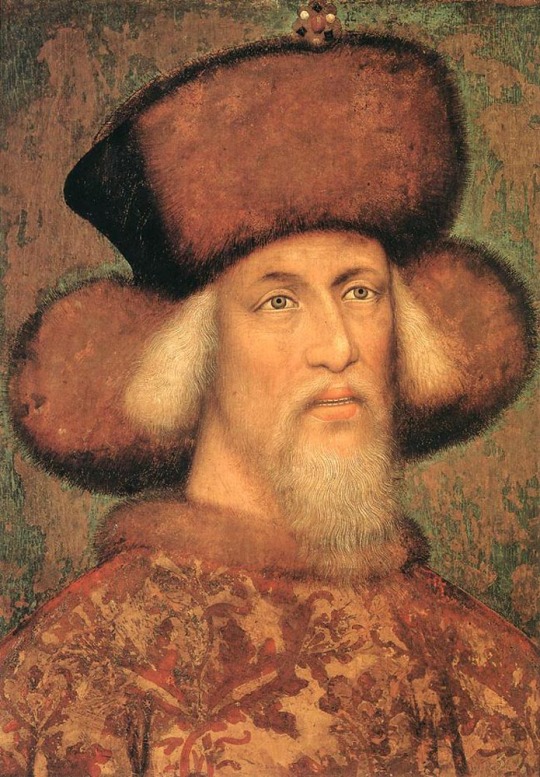
Zsigmond (Žigmund Luxemburský)
1387-1437
also king of Bohemia and emperor of the Holy Roman Empire, elsewhere best known from what he did to Jan Hus, but we don't have enough time to unpack that, needless to say he's responsible for the bratríks (branch of hussites that went on supply raids into Hungary), so fuck him just for that
his rule in Hungary was long and eventful, after he secured the throne, his first order of business was a war with Ottomans, which ended in the catastrophic battle of Nicopolis, later another war, during which he regained Beograd, but lost Golubac, which was an important fortress
after the Hungarian nobles were found to conspire against him, he instituted harsh repressions, destroying many important noble houses, which he then tried to replace with a nobility faithful to him - but that just caused yet another conspiracy, which Zsigmond had to appease by marrying Barbara of Celle
founded the Order Of The Dragon, which is how Vlad II. Dracul and after him his son Vlad III. Dracula got their monikers
supported the rights of cities, especially in his Minor Decree, but lest our fellow medieval city kinnies start liking him too much, he was also the guy who lended several cities in Spiš to the Poles (cities formally stayed part of Hungary, but the profits from them went to the king od Poland; which is basically how it stayed untill the divisions of Poland)
he also instituted another two law codes concerning courts and army, gave himself placetum regium (right to veto reading of papal bulls on his territories, which meant he could witheld the orders of the pope itself from his people; @best-habsburg-monarch might recognize this one)... basically for better or for worse, he was a Big Damn Deal here, truly one of the most important monarchs of Hungary, just look at how long his entry is
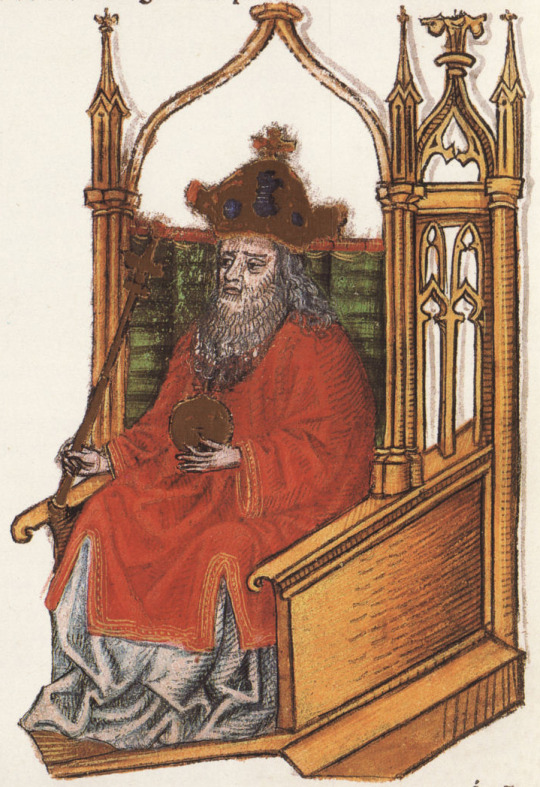
II.Géza (Gejza II.)
1141-1162
married Yevfrosinia of Kyiv, which raised the international prestige of his kingdom, only to fuck said prestige up by unsuccessful invasions to the Rus' and the Byzantine Empire
first one to invite Saxons and Walloons to Transsylvania, mostly to use their expertise in mining to develop local mines, at which point he also gave him some autonomy from the local feudal lords; his strategy was later repeated on a larger scale by Béla IV. after the devastation of the country by Mongols, and that kids is how we got free royal cities of Hungary
he also invited cistercians to Hungary
12 notes
·
View notes
Text
The (Central Asian) Khazar name is derived from Turkic *qaz-, meaning "to wander." The Ashina was considered a sacred clan of quasi-divine status. Q1 actually refers to the subclade Q-P36.2. The Ashina clan, a noble caste, carry the 16q24.3 "red gene" inherited from the Sumerian Annunaki, the root of the Dragon seed that permeates royal lines: Merovingian, Carolingian, Tudor, Plantagenet, Stuart, Hapsburg, Hanoverian, Saxe-Coburg-Gotha, Guelph, Bowes-Lyon, Battenberg (Mountbatten), Guise, and Savoy families - and Transylvanian lineages. The Davidic House of Judah married into the descent of the Merovingian Kings of the Franks. They are connected by a shared bloodline. The dragon archetype rests within the Dragon blood, passed on through the genes.
According to Nicholas de Vere, "Briefly, the Dragon lineage starts in the Caucasus with the Annunaki, descending through migrating proto-Scythians to the Sumerians while branching off also into the early Egyptians, Phoenicians and Mittani. A marriage bridge back to Scythia infused the Elvin line of “Tuatha de Danaan” and the Fir Bolg, which branched into the Arch-Druidic, Priest-Princely family to the Royal Picts of Scotland and the ring kings of the Horse Lords of Dal Riada, through the Elven dynasty of Pendragon and Avallon del Acqs, and down to a few pure bred families today."
The Royal Court of the Dragon was founded by the priests of Mendes in about 2200 BC and was subsequently ratified by the 12th dynasty Queen Sobeknefru. This sovereign and priestly Order passed from Egypt to the Kings of Jerusalem; to the Black Sea Princes of Scythia (Princess Milouziana of the Scythians) and into the Balkans - notably to the Royal House of Hungary, whose King Sigismund reconstituted the Court just 600 years ago. Sigismund’s assumed descent from Melusine. Her ancestry actually can be traced back to the Scythian Dragon Princess Scota, Queen Sobekh Nefru and the Egyptian Cult of the Dragon. Vlad Dracul was a minion of Sigismund of Luxembourg, and was educated at the Emperor's court in Nuremberg. Dracul was invested into Societas Draconis.
The Byzantine Emperor Constantine was a Dragon King. The Byzantine emperor Leo III married his son Constantine (V) to the Khazar princess as part of the alliance between the two empires. Princess Tzitzak was baptized as Irene. Their son Leo (Leo IV) was known as "Leo the Khazar", emperor of the Eastern Roman (Byzantine) Empire from 775 to 780.
The re-expansion of paternal group R1b and maternal group H from the Basque Ice Age refuge spread up the coasts of all the countries facing the Atlantic, after the ice melted. The British Isles retained higher rates than the other countries, for several reasons related specifically to early movements directly from the Basque country rather than from general diffusion from western Europe. First, as a result of lower sea levels, the British Isles, in particular Ireland, were connected and at the furthest edge of the extended Ice Age European continent, and thus received the bulk of early coastal migration. Then, as sea levels rose, first Ireland then Britain became islands, relatively insulated from further migration from elsewhere in Europe, thus preserving their high rates of R1b and similarity to the initial settlements. The means by which I could separate the R1b types in the British Isles from those on the other side of the channel is by the use of “Founder Analysis.” That is, looking at the detail of their gene types (so-called STR haplotypes). These revealed 21 founding clusters, which could only have arrived direct from the Basque country. Their descendant twigs are unique to the British Isles.
(Source)
1 note
·
View note
Text
Zawisza The Black inspired by Fate/GO universe

quick sketches to give me an idea of the character
Zawisza is read as Zaveesha
In Polish there's a saying that goes along the lines of: 'You can always count on someone like you can count on Zawisza' ('Można polegać na kimś jak na Zawiszy'), we still use it to describe someone who's really dependable. In Warsaw (and I'd assume other cities as well), there's a big roundabout bearing his name as well. I used to drive by it every day to get to my various University classes and ended up pondering what kind of person Zawisza was.

Stages 1 to 3 concepts - swords removed from hands to show full
front of the character
He lived during the twilight of the Medieval era in Poland and took parts in various battles, a famed knight that never backed down on his words. One of the most famous battles he took part in was the Battle of Grunwald (The First Battle of Tannenberg) in 1410 AD. While there is no concrete evidence, it is said that Zawisza has saved the king's flag in the crucial moments of said battle.
He was named 'Black' after his famous black armor that he proudly wore to battles. Some also say that he may have been named 'Black' after his hair. I prefer the first interpretation!
1st stage - Young Zawisza, a happy-go-lucky lad. He's wearing just a shirt and some trousers - adventure is way more imporant than looks at this time for him! From the flea market, ending at churches and courts, you can find this lad causing trouble for the troublemakers. A kid with a strong sense of justice, if you needed help, you knew he'd be there for you.
2nd stage - Young Adult Zawisza, he's gathered some experiences and has learnt how to carry himself in the court of the public eye, but nobody said he has to be very serious while doing so. A young man who knows when to be serious and when he can let loose. Not very interested in public meetings, he still fulfills his role with upmost care. His attitude towards life and people hasn't changed much - he's still a just lad at heart, who refuses to see people in need cry. His experiences have given his outlook more depth, while the world may be an unjust and cold place at times, he made it his life mission to change it for the better for people he cherishes, one person at a time.
3rd stage - Adult Zawisza, a man of the legend (and history!). Bearing his famous black armour and dark blue cape (based on Matejko's Bitwa pod Grunwaldem painting) he's ready to join the fray. A fair man whose smile steals people's hearts, this knight always keeps his promises. His prescence feels like a fresh breeze blowing, he's simply a joy to be around. Idealistic to a fault, which lead to his death. A diplomat, king Władysław Jagiełło's trusted confedants, he was a man of many titles and friends across various countries.

Stages 1 - 3 swords concepts - first one is a traditional polish sword, second one is a polish-inspired sabre, and third one is more fantasy-based sword that uses magic along with user's physical prowess
These connections eventually led to his death - during a battle with the Ottoman Turks, Zawisza's group was protecting the rear of hungarian army - King's army has been defeated and had to retreat. Zawisza was a man of great importance to King Sigismund of Luxembourg, so the knight has been sent a boat to safely reatreat. Seeing as his mission hasn't been completed, Zawisza refused and ended up being held hostage by the Ottoman Turks.
It's said that Zawisza died because two of the Ottoman soldiers were fighting between each other about whose hostage he actually is - one of the soldiers in fit of rage cut off Zawisza's head.
Historians also say that the reason of Zawisza's death was King Sigismund's bad strategy skills.
His ideals lead to his death but he wouldn't have changed a thing, instead wishing to live a new life in a modern world to experience it once again - to taste the food, to see people smile, to be able to smile himself once again.

Patterns from stages 1-3
I had lots of trouble coming up with his Noble Phantasm, but in the end I decided he'd have two instead of one!
1st NP:
A man you can count on - a cheery smile that shines through the darkness
This Noble Phantasm is the essence of Zawisza's character and ideals - the less HP he has, the more HP he heals. If his HP falls below 20%, he fully heals himself and the team, while also giving them various buffs, removing all debuffs, and slightly charging their NP bar. If his HP is between 20% to 50%, he heals half of his team's HP, removes the debuffs, and slightly charges their NP. If his HP is between 50% and 100%, he cannot use this NP.
Using this NP would be risky, as the Player would have to keep Zawisza on relatively low HP, risking his death. High risk, high reward.
This NP's type would be ARTS.
2nd NP:
Bitwa pod Grunwaldem - a saviour admist chaos
An AOE Buster-type NP that would deal massive dmg while ignoring all defence buffs (like invulnerability) - could also get bonusses from the missing % of Zawisza's life. This is a shout out to Zawisza's role during Bitwa pod Grunwaldem - I imagine he had to cut through many enemies just to be able to get to the king's flag and save it (having the banner stolen meant that you lost). He was a brave man, quick on his fit, with a charming smile inspiring his comrades.

Zawisza's final art
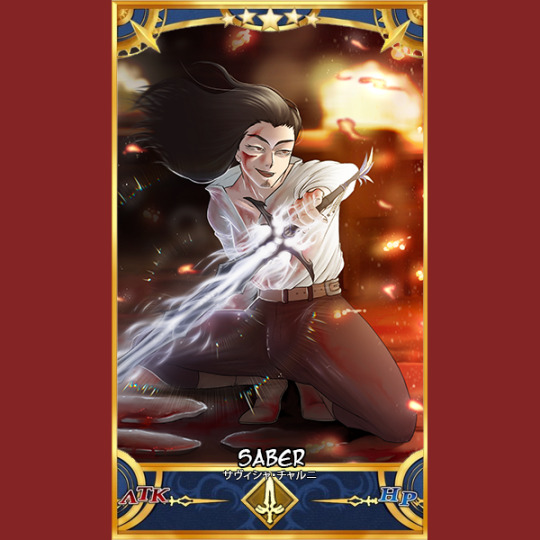
Zawisza's final art with servant border

90s anime inspirted picture of Zawisza

manga inspired picture of Zawisza

a quick sketch of Zawisza

Zawisza in different styles

Zawisza smiling
0 notes
Text

Sovngarde is the Battle Anthem Song of King Harold Godwinson's Anglo-Saxon England Epic in 1066! Harold Godwinson is the Dovakhin! Edyth Swannesha is Sovngarde! Harold Godwinson is the Sun! Edyth Swannesha is the Moon! Harold Godwinson's Battle Flag is the Wessex Wyvern! Anglo-Saxon Knecht 🦢 of Orfeo Power and Glory Sidney Empire and Glory 🦢⚜️❄️⛩️🦉💎 Harold Godwinson's Anglo-Saxon Imperial Huscarl Armies Fought like Lions the Epic Battle of Fulford, the Battle of Stamford Bridge, the Battle of Hastings, the Battle of Wales, the Battle of Northumbria and Defended the North from Guillaume le Batard's Cruel Harrowing of the North! Sovngarde is the Magic Battle Song of Queen Edyth Swannesha, the Anglo- Saxon Arch Witch of the Universe, Hexe of Anglo-Saxon England and the North, Gospodarka na Slavata i Svobodata, Lady of Mercia and Sussex and the Realm for the Anglo-Saxon War against the Norman Arch witch in the Norman Camp below Senlac Hill! Queen Edyth Swannesha Had Gothic Astral Drakoness in the Air Like in Van Helsing! Edyth Swannesha is the Dovakhiness! I'm Sent Here by Goddess Freyja! I'm Sent Here by Divine Providence and Lords of Light! Vladitsite na Nebesata! I'm in Samadhi Superconsciousness and Kaivalya Power! Sovngarde is the Anglo-Saxon War Song of Eorl Edwin and Morcar, Eorl Gyrth Godwinson and Eorl Leofwine Godwinson, Lord Siward, Hereward the Wake and Robin of Locksley and Wat Tyler and Thomas Wyatt the Younger's Battles' Wars, Skirmishes and Campaigns even in Uprising were for Liberation of England from the Normans and the Spaniards! Sovngarde is the Battle Anthem of Sir Philip Sidney's Divine Star Society and Order of the Drakon fov the war in Holland against Spain! The Revenge War for the Fate of Queen Jane Grey and King Guildford Dudley of England, Wales, Ireland and France! It's a Samadhi Heaven Song! Sovngarde is the Battle War Song of King Sigismund von Luxembrourg's Crusade of Nicopolis of a Pan-European Crusader Army Mainly French and Hungarian against the Turks of Sultan Bajaseth for Liberation of Bulgaria and the Saving of the Byzantine Empire and Constantinople! All of My Crusaders are Dovakhins and Samurai Knights, the Knights of the Drakon! It's 624 Yearss of Greatness of the Order of the Drakon! Bulgaria is a Free Country for 142 Years! I Live in Sofia, Bulgaria and I am a Free Man! The Dovakhin is an Archangel and a God! Az sam Gospodar na Slavata i Svobodata! Sovngarde is the Battle Song of Emperor Timur the Great's Timurid Army and Horde for the Battle of Angora in Which He Decisively Defeated the Turks of Sultan Bajaseth, Captured the Cruel Sultan and Put Him in a Cage! It was the Revenge of King Sigismund von Luxembourg and Count Jean de Nevers for the Decisive Crusader Battle of Nicopolis, and the Treatment and Fate of My Knights and Army by the Cruel Turks! I Shall Conquer with Angels and with Gins, with Archangels and Knights and Ladies for Everything that Has Happened to Me in Bulgaria! Beowulf el Elyon Shall Love and Defend Me! This is Knight Tervel Kamenov's Epic War Song the Mount Kailash Pan-Gaian Epic, Alone with Mikael the Great, Like Vlad Dracula, Gabriel, that Saved Gaia and the Universe! Beowulf Loves and Defends Mount Kailash! Let the Echoes Become Your Strenght! What You Do Echoes in Eternity! Let Your Actions Echo in Eternity! Hail Goddess Crystine Slagman, final Crystine! Hail Sovngarde Lord and Bard Orpheus, Jeremy Soule! I'm Always on the Side of Divine Providence and Divine Providence is Always on My Side! Promote Only Nobility, People! Fight for Love, Freedom and Nobility! Hail Goddess Crystine Slagman! Reward! Nagrada! I'm the Lord of Fortune Better than Boethius! Rex Tvmundos Majestatis, Qu Salvandos Slava GRatis, Salva Me Fons Pietatis, Salva Me Fons Pietatis! O King of Tremendous Majesty, who Save s wwithout Price Those Destined to Be Saved, Save Me Font of Piety! I'm a Legendary Hero of Hoary Glory, Lord of the Anglo-Saxon Folk and Nation, Kingdom and Anglo-Saxon Empire Worldwide, the British Empire!
#edyth swannesha#lady of the rose#bulgaria#art#nature#afina ariosofia#belisarius#lady of the lake#Anglo-Saxon England#yoga#self#isabella bronstrup
0 notes
Text
Medieval chivalric orders are the fabled and idealized stuff of legend. But what exactly was the Order of the Dragon, the brainchild of Sigismund of Luxembourg.
28 notes
·
View notes
Text
King Sigismund von Luxembourg Elohim Order of the Drakon Bat Olifant
King Sigismund von Luxembourg Elohim Order of the Drakon Bat Olifant
Actions
« Prev
1
2
3
4
5
..
8
Next »
PathfinderAdministratorΜελαχελDivine Star Yoga Premananda Yoga Elohim Kriya Yoga Kaivalyananda 🕉️ Padma [email protected]: 1,873Yoga: Yogi KnightBio: Prem King Sofia Amethysta अर्थी Ariosofia Ариософия 🍇 Phanagoria Gondor BulgariaMember is Online23 Feb 2022 at…

View On WordPress
0 notes